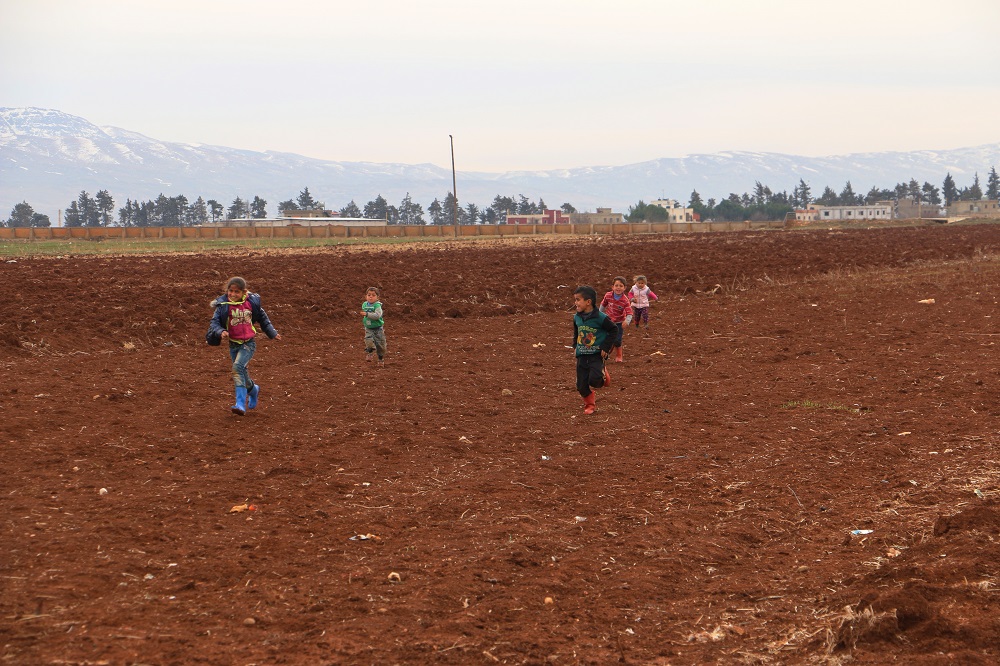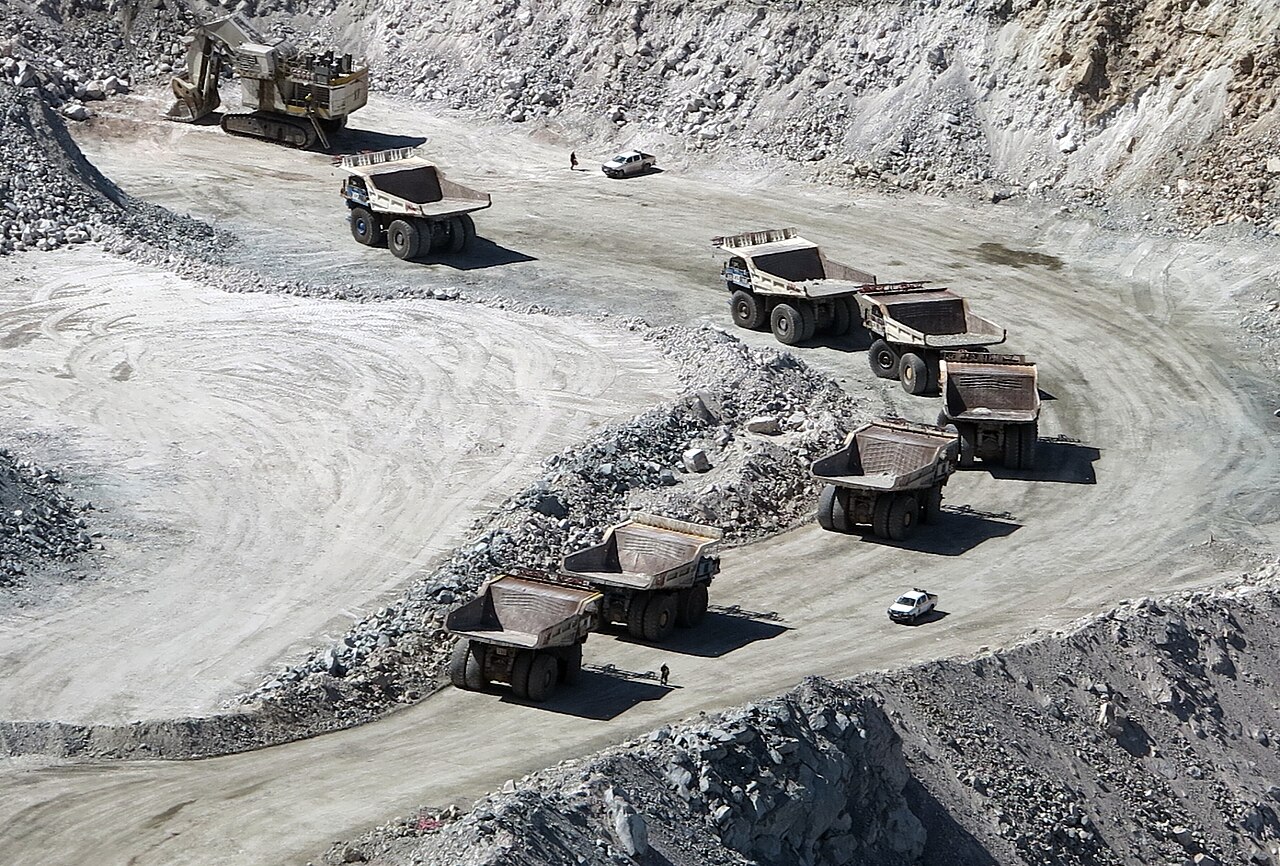Dispatch #1: Tragic Choices in a Lebanon Overwhelmed
BAALBEK, Lebanon — The mud is red and deep this morning in the Bekaa valley. Children, undeterred, giggle and slide in their UNICEF-issued rubber boots. Snowy mountains rise out of the mist at the edge of the plain. Beyond the snow is Syria. This summer, 40 miles from here—in Lebanon’s Anjar, known for eighth century Umayed ruins—families dining in open-air restaurants could hear the gunfire as rebel forces battled the Syrian army and Hezbollah for the town of Zabadani.

Published by The Lawfare Institute
in Cooperation With

BAALBEK, Lebanon — The mud is red and deep this morning in the Bekaa valley. Children, undeterred, giggle and slide in their UNICEF-issued rubber boots. Snowy mountains rise out of the mist at the edge of the plain. Beyond the snow is Syria. This summer, 40 miles from here—in Lebanon’s Anjar, known for eighth century Umayed ruins—families dining in open-air restaurants could hear the gunfire as rebel forces battled the Syrian army and Hezbollah for the town of Zabadani.
The Syrian civil war is close.
 An informal camp near Baalbek, Lebanon.
An informal camp near Baalbek, Lebanon.
After nearly five years of war, here are two staggering figures about this tiny country of fewer than 5 million people and 4,000 square miles, that not too long ago witnessed its own civil war:
-
one in four people residing in Lebanon is Syrian;
-
one in three is a refugee (there are also more than 450,000 Palestinian refugees in Lebanon; some whose families came in 1948, and others who were residing in Syria until recently and are now refugees twice over).
Informal settlements are dotted across Lebanon. From the beginning, the Lebanese government made one thing clear to the huge waves of refugees it has received: no camps. The perverse result is that any structure refugees build must be temporary, in most cases plastic sheeting over wooden frames.
The sight of these structures is common in this valley. Even before the war, Syrians would come to Lebanon for seasonal agricultural work and set up settlements like these. Indeed, many of the people here now first came years ago to work the land. Then as now, one person, known as the “shaweesh,” would rent a plot of land from the local farmer and the workers would pay him monthly rent for their tents. Now they also pay a part of their daily wage.
In this particular settlement, each structure has an outhouse of sorts and every two houses or so, its own water tank. Loops of clothing line bedecked with brightly colored house dresses and children’s pajamas hang between structures. One family has built a pigeon house where their little boy raises pigeons.
 A little boy outside his family’s pigeon house.
A little boy outside his family’s pigeon house.
Despite the mud, each family keeps its makeshift home remarkably clean; even small children know to take their caked boots off at the entrance before collapsing onto the carpets or, sometimes, a few cushions around the heater.
Here two separate settlements sit close to one another, each home to about 200 people. Only about 20 percent of Syrian refugees in Lebanon live in settlements like these. The rest live in buildings, in many cases half-built or unwinterized garages, among the Lebanese population. Many are so isolated that NGOs and other service providers struggle to reach them at all.
A year ago, almost to the day, the Lebanese government closed its borders with Syria—or, rather, it changed the requirements for entry such that fleeing violence and persecution were not longer valid criteria for entering the country. Syrians can now only enter for work—if they can find a sponsor—for onward travel, or for tourism. Although a “humanitarian reasons” provision also exists, few, if any, people seem to actually qualify.
Donor fatigue set in long ago, according to NGO workers, but this summer’s refugee crisis in Europe gave aid groups working in Lebanon something of a funding boost. As the refugees flowed into their own countries, European leaders decided to try to keep as many as possible in the Middle East. Lebanon is a front-line state in that effort. If refugees stay here, they don’t come to France or Sweden or Germany.
Countries have announced their intentions to look beyond raising money and to long-term solutions to the crisis. At an upcoming conference slated to take place in London, nations plan to focus on how to give refugees something that resembles a stable life in a place where the struggling local economy and delicate political balance makes their presence a liability and economic burden.
For now, there is no end to the Syrian war in sight and no possibility of building a permanent life in Lebanon. And so Syrian refugees are left to the impossible task of trying to build some semblance of a stable life in a place in which they know they cannot stay.
I’m here in Lebanon as part of a Lawfare-Omphalos project on refugees, security, and Syria. This series examines the Syrian civil war, along with other regional conflicts such as Iraq and Afghanistan, through the lens of refugees fleeing those countries. Over the next weeks and months, I will travel the region to speak with refugees about the places and conflicts from which they come and report on the challenges refugee flows pose to the places that receive them. The series will dispatch from Lebanon, Turkey, Jordan, Greece and other Balkan states, and up into Germany and France. This is the first.
***
Reham, age 12, doesn’t go to school anymore. Every day at 6 am she heads to work in the fields instead. She misses the classroom. “I like school,” she says, “I wanted to be a teacher.”
The field work is grueling; each day, she and the girls with whom she works carry large sacks of potatoes 50-meter distances. They each make $5 a day, and the leader—also a Syrian—of their informal settlement, the shaweesh, takes $1 of that. Reham’s mother has breast cancer and Reham hopes that the money she earns will buy medication.
“Of course I wanted to go to university,” she says. “Who doesn’t want to go? But here it’s $3,000 a year.” To a family that survives on a single meal each day, unable to afford any more, the sum is unimaginable.
NGOs report an uptick in child labor over the last year.
In order to remain in Lebanon legally, each adult must pay $200 every six months to renew a residency permit. For most Syrians, even those who once had money, this sum has become prohibitive after five years in exile. Few manage to cobble together enough to pay it even a single time, let alone twice a year. Moreover, residency permit holders must agree not to work. For decades, Syrians have accounted for large swathes of the Lebanese workforce in agriculture and construction, as well as in informal sectors such as restaurants and cafes. In the past, any Syrian could get a six-month visa but now Syrians are not legally allowed to do these jobs. Many do them anyway, often earning a fraction of what they once were paid. But whether undocumented, working illegally, or both, Syrians refugees are entirely at the mercy of their employers.
These days, the only path to legal work is for a Syrian to find a Lebanese sponsor, creating fertile conditions for exploitation. As a result, many men of working age stay at home, for fear of being caught without documentation at a checkpoint.
Children can can pass through checkpoints without documents, and so it increasingly falls to them to work to support their families.
NGOs estimate that more than 200,000 children are out of school. Of those, some receive informal education, perhaps from a former teacher or some other educated person living in their settlement. But many do not. The Lebanese government initiated a second round of classes for Syrians that begin at 2 pm each day. But these classes end late in the afternoon, and many parents are unwilling to risk their children walking home alone after dark, particularly if the school is far away. In some cases, children must cross a checkpoint to get to school, and parents fear that if something happened to their child on the other side of the checkpoint, they would be unable to cross to get to them.
As a result, for many children like Reham, education has become a mere dream. The reality of their lives is one of physical labor and exploitation.
***
Whether to send children to work or school is far from the only impossible choice forced on Syrian refugees in Lebanon. Indeed, the conditions here create all too many impossible choices.
Last week, Hassan told his twin 15-year-old girls, Samar and Haya, that they are to be married to men they have never seen, each more than ten years the girls’ senior. Hassan says it was one of the hardest decisions he has ever had to make. [Names have been changed to protect both the subjects and their families in Syria.]
“I want the whole United Nations to hear this,” he says. “I have had to take away all of their dreams. I have to marry them off, because I can’t feed them.”
“I have nine people in my family and they [the UN] give me $108 a month”; that’s $12 per month per person. Hassan’s wife, the twins’ mother, has cancer that they cannot afford to treat, and his baby daughter, not yet a year old, requires ongoing medical attention for burns she sustained in a household accident two months ago. Hassan has 1,700,000 Lebanese pounds ($1,200 USD) in debts, and the interest on those loans is about to increase rapidly if he doesn’t pay soon.
“I want to get married because I want to help my father,” says Samar, one of the 15-year old twins. “Before, I wanted to study. I was good in school.” In Syria, Samar had wanted to be an art teacher.
“Maybe her husband won’t let her continue her studies,” says her father. The others in the tent shake their heads, and mutter that her husband will probably insist she stay home.
But of the two girls, Samar is considered the lucky one: her husband-to-be is a 27-year-old man who lives in the same informal settlement as her family and she will be able to remain close. She met him only a few days ago and “he seemed nice.”
For her sister, Haya, the future is less certain. Haya has never met her fiancé. All she knows is that he is a day worker in another settlement.
“I don’t want to get married. I like mathematics. Back in Syria, I wanted to be a math teacher,” she says.
“They will have their engagement party on the same day,” says a female relative brightly, trying to be positive. The two girls exchange wan smiles.
“You see?” says their father. “I want everyone to know about this. But what can I do?”
It is often the women who bear the brunt of the difficult choices.
Heba is eleven months old. A lock of flame-colored hair protrudes from beneath the woolen bonnet her grandfather tugs more securely over her forehead to keep her warm. She chortles as her grandmother pinches her wool-clad knee; she’s unaware of the precarious situation she faces. Her mother arrived in Lebanon, pregnant with Heba, when she and her parents fled the war in their hometown of Raqqa--the home base of ISIS.
Heba’s mother had other problems. She had differences with her husband’s family—her parents clearly are not interested in discussing the details—and had left him. A year later, in Lebanon, with no money and no way to support herself or her aging parents, she remarried another Syrian man. His condition: she had to leave the baby. Now she visits Heba only once a week, or sometimes every two weeks. Heba is with her grandparents, who are too old to be desirable candidates for a jobs in the fields—the ones around here pay between $2 and $7 per day. They rely entirely on support from the United Nations and international organizations.
 Heba with her grandparents.
Heba with her grandparents.
***
The streets of Beirut are lined with Syrian mothers and children. They sit on the sidewalk all day in the wet Lebanese winter. For them and many others, the future is on hold.
Meanwhile, in London, at the planned donors’ conference set for February, the emphasis will be on “supporting neighboring countries,” identifying “long term funding solutions” and addressing “the longer term needs of those affected by the crisis by identifying ways to create jobs and provide education.”
The subtext: keep them in the Middle East.
The impulse is understandable, given the number of refugees that fled to Europe this past summer and the trouble European countries are having absorbing them. But it rings hollow to the Lebanese who are now charged with deciding what kind of futures children like Reham will have, how to provide for Heba and her grandparents, and whether child marriages are really an acceptable outcome for Haya and Samar.
In Germany, the European country that has accepted the largest numbers in the past year, the refugee population amounts to 1.35 percent of the total population. In Lebanon, more than 30 percent of the population are refugees.
From here, Europe’s problems look pretty trivial.




